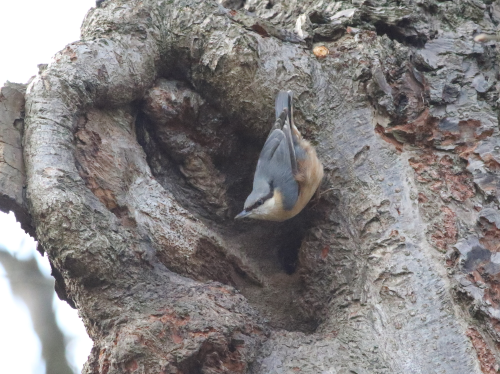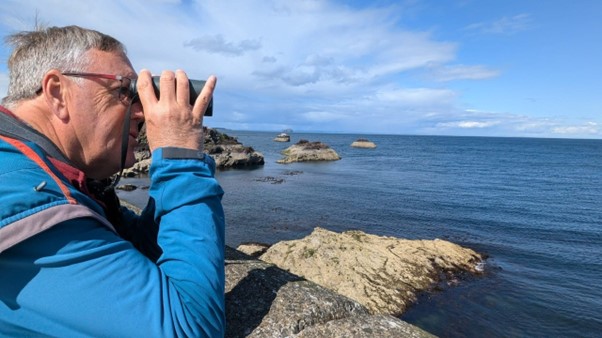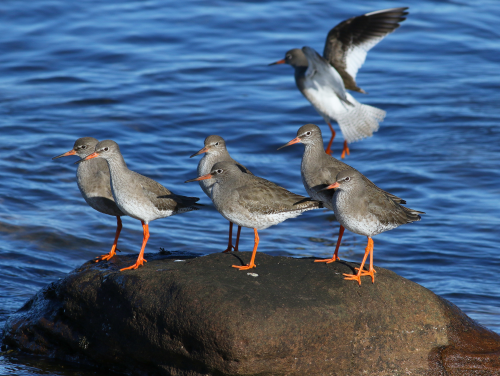About us
Scottish Ornithologists’ Club Lothian branch
Scottish Ornithologists’ Club – bird atlas mapping in the Lothians

A local bird atlas mapping project contributes to national data sets and helps mentor new recorders
The Scottish Ornithologists’ Club (SOC) Lothian branch has held a so-called Discussion Group since the 1960s and during this time has been responsible for organising a whole raft of different ornithological fieldwork in the area.
The group meets monthly from September to April at the Club’s headquarters (formerly Edinburgh, now Aberlady, East Lothian) and members include both very experienced field birders and relative newcomers to the hobby who are keen to become more involved in field study, recognising the huge importance of robust data collected locally in supporting the conservation of the birds and their habitats, as well as the personal benefits being outdoors with a purpose can bring.
Two projects the group has coordinated in the last 20 years stand out. Firstly, SOC Lothian organised a local bird atlas – mapping the distribution of all birds in Lothian (and Borders) at the tetrad (2x2km square) level. This was the second such atlas in the area following one 20 years earlier, so this enabled the mapping of changes in distribution. Data from these local projects contributed directly to the wider data collection for the publication of two bird atlases of Britain and Ireland, led by the British Trust for Ornithology (BTO) – for example, the Bird Atlas 2007-13. The BTO is a major data partner of the NBN Atlas, and therefore data is shared from a local to a national level.
In Lothian and Borders over 850 volunteers took part in the local bird atlas mapping project, recording their observations directly into a website set up for the purpose, and 11 organisers and authors analysed the data and published the results in a book.

Allan Finlayson of West Lothian took up fieldwork as a retirement project, having never done this type of work before. Although a long-term resident of the county, he discovered many new areas for the first time, many of which were not only good for birds but also lovely places to walk in. He also met many helpful people: “Many people took a great interest in what I was doing. Some wanted to know what the survey was all about; others were very keen to tell me of the local birds they had seen themselves”. Despite initial reservations about the work becoming a chore or his competence in taking part, Allan says “within a few weeks I was completely hooked and enjoyed the whole project immensely”.

Following the success of the atlas across the whole of Lothian and Borders – in particular how it brought new people into the hobby and how much it was enjoyed – SOC Lothian organised a short follow-up study in East Lothian and only in the winter months. The group used the project to invite new birders to team up with a mentor to help them learn the techniques and some bird identification skills. One of those mentored said “I took a great deal of benefit from the scheme, I encountered new species, saw new places and made new friends. Upon conclusion of the mentorship, I became a member of the SOC so I can continue to enjoy those benefits and to give back when I can”.
A second project has also been run by the group for over 20 years. Every winter around the end of January, when low tide around the middle of the day coincides with a weekend, the whole coastline from Gullane in East Lothian to the English border north of Berwick-on-Tweed is walked by 20 or more volunteers who count all the birds they find. The results are collated and shared and have demonstrated in particular how most wading birds have declined and how the distribution of some species has shifted in response to increased disturbance on beaches by walkers and especially dogs off the lead.

Mark Holling, who has chaired the Discussion Group since 1991, comments that “it has been a source of immense pleasure to help support and encourage many generations of birdwatchers to enjoy the local birdlife and most importantly help document the changing birdlife of Lothian, while always having fun!”.
This biodiversity data story was shared by SOC Lothian branch with the Better Biodiversity Data project, led and managed by the NBN Trust and supported by NatureScot and The Scottish Government.

